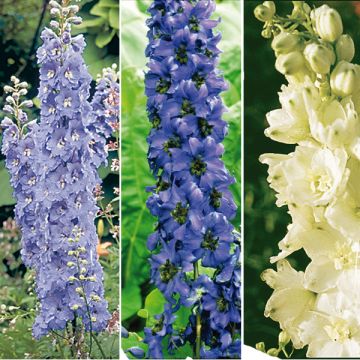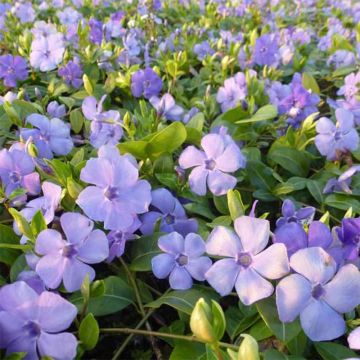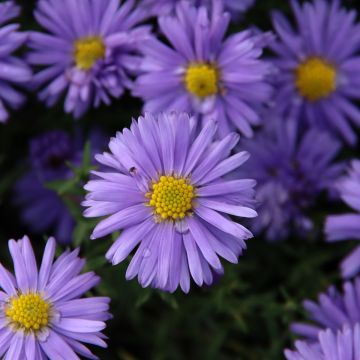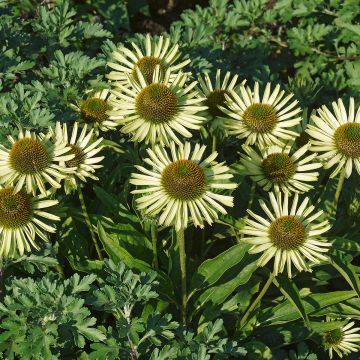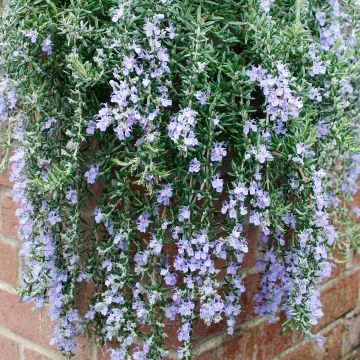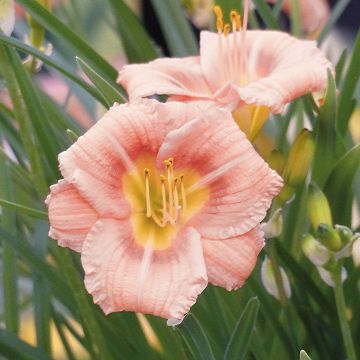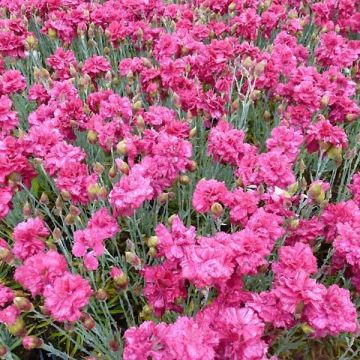Shipping country and language
Your country of residence may be:
Your country of residence is:
For a better user experience on our website, you can select:
Your shipping country:
Andorra
Austria
Belgium
Bulgaria
Canada
Chile
Croatia
Cyprus
Czechia
Denmark
Estonia
Finland
France
Germany
Greece
Hungary
Iceland
Ireland
Italy
Latvia
Lithuania
Luxembourg
Malta
Monaco
Netherlands
Poland
Portugal
Romania
Slovakia
Slovenia
Spain
Sweden
Switzerland
United Kingdom
We only deliver seed and bulb products to your country. If you add other products to your basket, they cannot be shipped.
Language:
French
German
Spanish
English
My Account
Hello
My wish lists
Plantfit
Log in / Register
Existing customer?
New customer?
Create an account to track your orders, access our customer service and, if you wish, make the most of our upcoming offers.
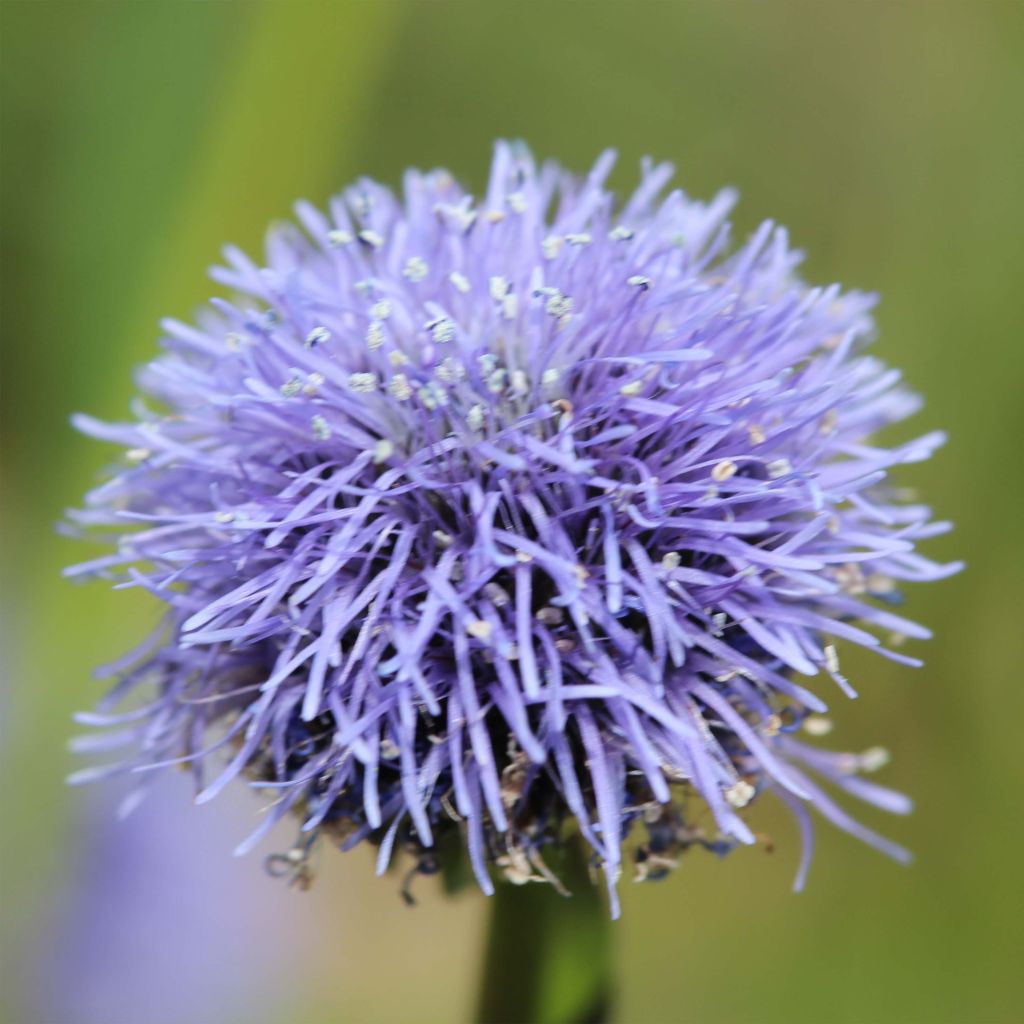

Globularia punctata


Globularia punctata


Globularia punctata
Globularia punctata
Globularia punctata
Common globe flower
Why not try an alternative variety in stock?
View all →Order in the next for dispatch today!
Dispatch by letter from €3.90.
Delivery charge from €5.90 Oversize package delivery charge from €6.90.
More information
This item is not available in your country.
Schedule delivery date,
and select date in basket
This plant carries a 12 months recovery warranty
More information
We guarantee the quality of our plants for a full growing cycle, and will replace at our expense any plant that fails to recover under normal climatic and planting conditions.
From €5.90 for pickup delivery and €6.90 for home delivery
Express home delivery from €8.90.
Does this plant fit my garden?
Set up your Plantfit profile →
Description
Globularia punctata (synonym bisnagarica) is part of a group of small perennial plants or undershrubs called globulars, native to the dry and limestone slopes of southern Europe in the broadest sense. This one, sometimes called common globe flower, is a spontaneous plant. Insignificant for most of the year, this very low cushion plant reveals itself when its beautiful blue inflorescences in small pompoms appear, both soft and extremely bright. It will flower before the arrival of summer, early or late depending on the regions, accompanying botanical narcissus, dwarf iris, iberis, and low euphorbias in highly mineralised settings and on unrewarding embankments.
Globularia punctata belongs to the Plantaginaceae family. It is mainly native to southern Europe where it is frequently found in medium mountains, in dry meadows and stony soils, in limestone soil.
It is an herbaceous perennial plant. Its stump forms a small low and spreading tuft, which will not exceed 15 to 20cm (6 to 8in) in height when flowering, with a 30cm (12in) spread. It develops small oval rosettes of leaves, often spatulate in shape, with small teeth. Flowering takes place from April-May to June, depending on the climate. Rosettes of leaves emerge from graceful floral stems, adorned with very small pointed leaves. At the end of its stems, solitary inflorescences are formed, organised in small hemispherical heads of 2 to 3cm (1in), characteristic of the genus Globularia. Surrounded by pointed bracts, each head is composed of hundreds of tiny sky-blue tubular flowers. After pollination by insects, the flowers give way to fruits called achenes, surrounded by persistent calyx. The basal foliage persists in winter, depending on the climate.
Globularia punctata is a sun-loving plant for rocky soil. It will fully play its role on unrewarding embankments and in rock gardens. It can be planted with other perennials that require similar growing conditions: Dianthus gratianopolitanus and perennial Geranium sanguineum, classic but unbeatable in this use. You can also grow it with other small cushions like creeping gypsophila, Helichrysum angustifolium, snow-in-summer (Cerastium tomentosum), or fleabane (Erigeron karvinskianus). In regions where spring arrives early, it can flower alongside dwarf iris and botanical tulips. It can also be planted in an alpine garden or in pots, containers, and flower boxes.
Globularia punctata in pictures


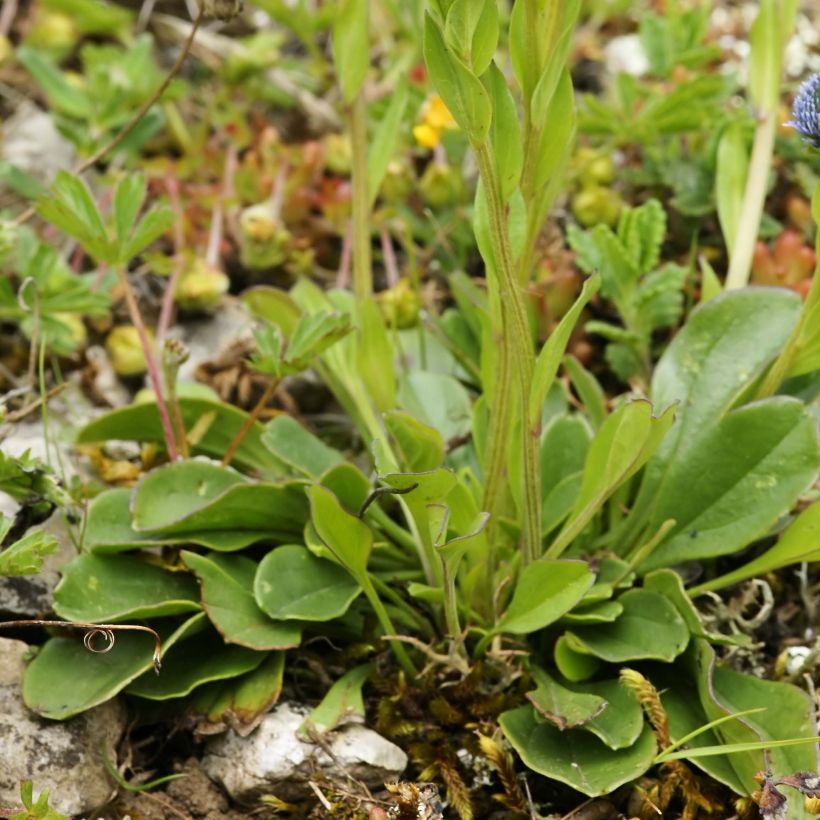

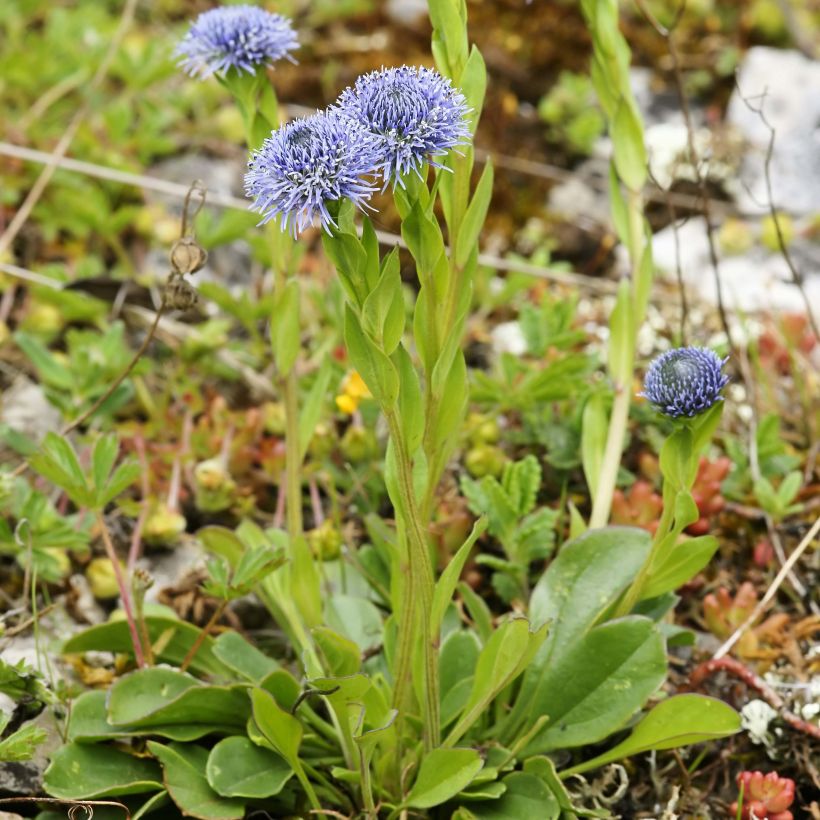

Flowering
Foliage
Plant habit
Botanical data
Globularia
punctata
Plantaginaceae (Globulariaceae)
Common globe flower
Mediterranean
Other Perennials A to Z
Planting and care
Plant in chalky, neutral or slightly acidic, well-drained soil that remains moist to dry in summer. It will also tolerate poor and stony soil. This perennial requires sunlight to bloom well. Resistant to cold and drought, its only enemy is excess moisture, especially in winter. In heavy soils, incorporate plenty of coarse sand or gravel to improve drainage before planting. Prune faded flower stems after flowering if you want to avoid spontaneous sowing. It is a small, very robust and undemanding perennial, but it fears competition from taller plants that can cast shade on it and suffocate it.
Planting period
Intended location
Care
This item has not been reviewed yet - be the first to leave a review about it.
Summer flowering perennials
Haven't found what you were looking for?
Hardiness is the lowest winter temperature a plant can endure without suffering serious damage or even dying. However, hardiness is affected by location (a sheltered area, such as a patio), protection (winter cover) and soil type (hardiness is improved by well-drained soil).

Photo Sharing Terms & Conditions
In order to encourage gardeners to interact and share their experiences, Promesse de fleurs offers various media enabling content to be uploaded onto its Site - in particular via the ‘Photo sharing’ module.
The User agrees to refrain from:
- Posting any content that is illegal, prejudicial, insulting, racist, inciteful to hatred, revisionist, contrary to public decency, that infringes on privacy or on the privacy rights of third parties, in particular the publicity rights of persons and goods, intellectual property rights, or the right to privacy.
- Submitting content on behalf of a third party;
- Impersonate the identity of a third party and/or publish any personal information about a third party;
In general, the User undertakes to refrain from any unethical behaviour.
All Content (in particular text, comments, files, images, photos, videos, creative works, etc.), which may be subject to property or intellectual property rights, image or other private rights, shall remain the property of the User, subject to the limited rights granted by the terms of the licence granted by Promesse de fleurs as stated below. Users are at liberty to publish or not to publish such Content on the Site, notably via the ‘Photo Sharing’ facility, and accept that this Content shall be made public and freely accessible, notably on the Internet.
Users further acknowledge, undertake to have ,and guarantee that they hold all necessary rights and permissions to publish such material on the Site, in particular with regard to the legislation in force pertaining to any privacy, property, intellectual property, image, or contractual rights, or rights of any other nature. By publishing such Content on the Site, Users acknowledge accepting full liability as publishers of the Content within the meaning of the law, and grant Promesse de fleurs, free of charge, an inclusive, worldwide licence for the said Content for the entire duration of its publication, including all reproduction, representation, up/downloading, displaying, performing, transmission, and storage rights.
Users also grant permission for their name to be linked to the Content and accept that this link may not always be made available.
By engaging in posting material, Users consent to their Content becoming automatically accessible on the Internet, in particular on other sites and/or blogs and/or web pages of the Promesse de fleurs site, including in particular social pages and the Promesse de fleurs catalogue.
Users may secure the removal of entrusted content free of charge by issuing a simple request via our contact form.
The flowering period indicated on our website applies to countries and regions located in USDA zone 8 (France, the United Kingdom, Ireland, the Netherlands, etc.)
It will vary according to where you live:
- In zones 9 to 10 (Italy, Spain, Greece, etc.), flowering will occur about 2 to 4 weeks earlier.
- In zones 6 to 7 (Germany, Poland, Slovenia, and lower mountainous regions), flowering will be delayed by 2 to 3 weeks.
- In zone 5 (Central Europe, Scandinavia), blooming will be delayed by 3 to 5 weeks.
In temperate climates, pruning of spring-flowering shrubs (forsythia, spireas, etc.) should be done just after flowering.
Pruning of summer-flowering shrubs (Indian Lilac, Perovskia, etc.) can be done in winter or spring.
In cold regions as well as with frost-sensitive plants, avoid pruning too early when severe frosts may still occur.
The planting period indicated on our website applies to countries and regions located in USDA zone 8 (France, United Kingdom, Ireland, Netherlands).
It will vary according to where you live:
- In Mediterranean zones (Marseille, Madrid, Milan, etc.), autumn and winter are the best planting periods.
- In continental zones (Strasbourg, Munich, Vienna, etc.), delay planting by 2 to 3 weeks in spring and bring it forward by 2 to 4 weeks in autumn.
- In mountainous regions (the Alps, Pyrenees, Carpathians, etc.), it is best to plant in late spring (May-June) or late summer (August-September).
The harvesting period indicated on our website applies to countries and regions in USDA zone 8 (France, England, Ireland, the Netherlands).
In colder areas (Scandinavia, Poland, Austria...) fruit and vegetable harvests are likely to be delayed by 3-4 weeks.
In warmer areas (Italy, Spain, Greece, etc.), harvesting will probably take place earlier, depending on weather conditions.
The sowing periods indicated on our website apply to countries and regions within USDA Zone 8 (France, UK, Ireland, Netherlands).
In colder areas (Scandinavia, Poland, Austria...), delay any outdoor sowing by 3-4 weeks, or sow under glass.
In warmer climes (Italy, Spain, Greece, etc.), bring outdoor sowing forward by a few weeks.
